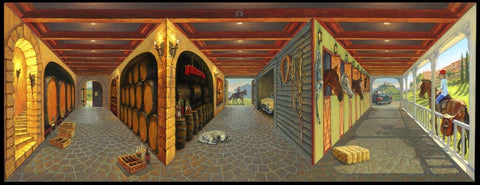TISY - 3D Wall Sculptures
Optical illusions by Tetiana Iukhymets and her husband Slava Yasnopolsky based on reverse perspective.
Tania, (Tetiana) Iukhymets was born in Kiev, Ukraine. After graduating from Kiev State Academy of Fine Arts, Tania spent years developing her own style of painting that has been influenced in large part by the French impressionists.
With numerous commissions and countless works sold, Tania established herself as one of the most respected and collected artists in Eastern Europe.
1985-1993: Studied art at the Kiev State Academy Of Fine Arts.
2005-2010: Taught painting, drawing and composition at the Kiev State College Of Applied Arts.
In the fall of 2010 Tania moved to California where she continues to pursue her quest for beauty through art.
In recent years, Tania Iukhymets has collaborated with her husband Slava Yasnopolsky (also from the Ukraine) to create unique three-dimensional art sculptures in "reverse perspective". These optical illusions move with the viewer and trick the viewer to thinking they can move further into the painting. Together, Tetiana Iukhymets and Slava Ysnopolsky create optical illusions under the artist name TISY (a combination of their initials).
Reverse perspective, also called inverse perspective, inverted perspective, divergent perspective, or Byzantine perspective, is a form of perspective drawing in which the objects depicted in a scene are placed between the projective point and the viewing plane. This has the visual effect that objects farther away from the viewing plane are drawn as larger, and closer objects are drawn as smaller, in contrast to the more conventional linear perspective for which closer objects appear larger. Lines that are parallel in three-dimensional space are drawn as diverging against the horizon, rather than converging as they do in linear perspective. Technically, the vanishing points are placed outside the painting with the illusion that they are "in front of" the painting.
The name Byzantine perspective comes from the use of this perspective in Byzantine and Russian Orthodox icons; it is also found in the art of many pre-Renaissance cultures, and was sometimes used in Cubism and other movements of modern art, as well as in children's drawings. The reasons for the convention are still debated among art historians; since the artists concerned in forming the convention did not have access to the more realistic linear perspective convention it is not clear how deliberate the effects achieved were.

